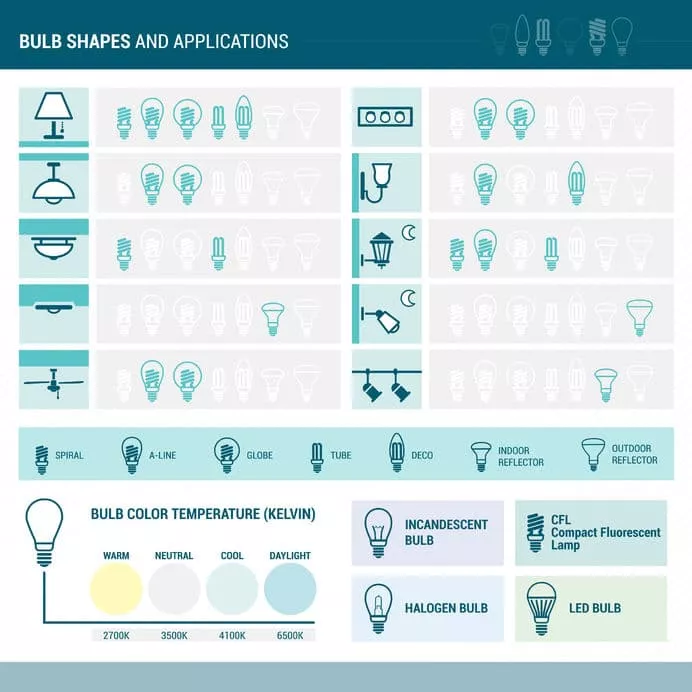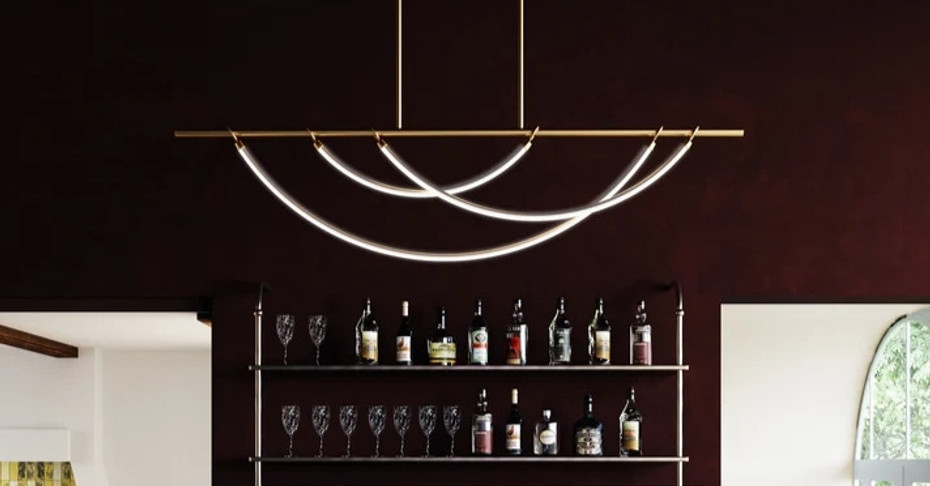Are you wondering if lamps really save electricity compared to ceiling lights? You’re not alone.
Many people want to cut down on their energy bills but aren’t sure which lighting option uses less power. What if choosing the right light could make a noticeable difference in your monthly electricity costs? Keep reading, because understanding how lamps and ceiling lights use energy can help you make smarter choices for your home—and your wallet.

Credit: www.premium-electric.ca
Electricity Consumption Basics
Understanding electricity consumption helps choose efficient lighting. Electricity use depends on the device’s power rating and usage time. Different lights use different amounts of electricity. Knowing basics helps save energy and reduce bills.
How Power Usage Is Measured
Electricity use is measured in watts (W). Watts show how much power a light uses. The higher the wattage, the more electricity it consumes. Energy consumption over time is measured in kilowatt-hours (kWh). One kWh equals 1,000 watts used for one hour.
Electric meters track kWh to calculate energy bills. Lower wattage means less electricity used. Choosing lights with lower wattage saves energy.
Wattage Comparison Of Lamps And Ceiling Lights
| Light Type | Typical Wattage Range |
|---|---|
| Lamps (Table/Floor) | 15W to 60W |
| Ceiling Lights (Incandescent) | 60W to 100W |
| Ceiling Lights (LED) | 10W to 30W |
Lamps often use lower wattage bulbs than ceiling lights. LED bulbs use less power than traditional bulbs. This makes LED lamps and ceiling lights more efficient. Wattage alone does not tell the full story. Brightness and light output also matter.

Credit: www.thebonniehome.co.uk
Types Of Lamps And Ceiling Lights
Understanding the different types of lamps and ceiling lights helps you make smarter choices about energy use in your home. The variety in bulbs and fixtures means your electricity consumption can vary widely. Let’s break down the key differences and how they impact your energy bill.
Incandescent Vs Led Lamps
Incandescent bulbs have been around for ages, but they use a lot more electricity compared to modern LEDs. LEDs use about 75-80% less energy and last up to 25 times longer. If you’ve ever switched to LED lamps, you probably noticed a significant drop in your electricity bill.
Incandescent bulbs produce light by heating a wire, wasting much of the energy as heat. LEDs, on the other hand, use a semiconductor to emit light, making them much more efficient. Would you choose a lamp that heats your room more or one that saves energy and stays cool?
Different Ceiling Light Fixtures
Ceiling lights come in various styles like flush mounts, chandeliers, recessed lighting, and pendant lights. Each type can use different bulbs, affecting overall energy use. For instance, recessed lights often use halogen bulbs, which consume more power than LEDs.
Some ceiling fixtures allow for multiple bulbs, increasing energy consumption if you’re not careful. If you have a chandelier with ten incandescent bulbs, it will use far more energy than a single LED lamp. How many bulbs does your ceiling fixture hold, and what type are you using?
Energy Efficiency Of Various Bulbs
| Bulb Type | Average Wattage | Lifespan (Hours) | Energy Efficiency |
|---|---|---|---|
| Incandescent | 60W | 1,000 | Low |
| Halogen | 43W | 2,000 | Medium |
| Compact Fluorescent (CFL) | 14W | 8,000 | High |
| LED | 10W | 25,000+ | Very High |
Looking at this table, you can see how LEDs stand out. They use far less wattage for the same brightness and last much longer. Choosing the right bulb for your ceiling lights or lamps can dramatically reduce your energy costs.
Think about the lighting you use daily. Could switching to LED bulbs in your lamps and ceiling fixtures lower your electricity usage? What’s stopping you from making that change today?
Energy Savings Factors
When considering energy savings in your home, it’s essential to look at the factors that influence electricity usage between lamps and ceiling lights. Understanding these factors can help you make informed decisions that reduce your energy bills and lessen your environmental impact. Let’s dive into the specifics to see how you can optimize your lighting for greater energy efficiency.
Room Size And Lighting Needs
The size of your room plays a significant role in determining whether lamps or ceiling lights are more energy-efficient. In smaller spaces, a single lamp might suffice, providing adequate illumination without wasting energy. However, larger rooms might require multiple lamps, potentially offsetting any energy savings compared to a single ceiling light.
Think about your lighting needs in each room. Do you prefer a cozy, dimly lit atmosphere or a brightly illuminated space? Adjusting your lighting strategy to match your preferences and room size can lead to noticeable energy savings.
Usage Patterns And Duration
Your usage patterns greatly influence energy consumption. If you frequently leave lights on for extended periods, consider using lamps with energy-saving bulbs. These can reduce electricity use, especially in spaces where lighting isn’t needed consistently.
Consider using timers or smart plugs to control when lights are on. This ensures lights are only used when necessary, cutting down on wasteful energy consumption. Reflect on your habits and identify opportunities to minimize unnecessary usage.
Brightness And Light Distribution
Ceiling lights often provide a more uniform distribution of light, ideal for tasks requiring consistent brightness, like reading or cooking. On the other hand, lamps can create focused lighting, perfect for creating ambiance or highlighting specific areas.
Assess the brightness levels you need in different areas of your home. Opt for lamps with adjustable brightness settings or dimmers to tailor the light to your needs while conserving energy.
How do you balance comfort and functionality in your lighting choices? By evaluating these factors, you can create an energy-efficient lighting plan that suits your lifestyle and reduces your electricity usage.
Cost Implications
Cost implications play a big role when choosing between lamps and ceiling lights. Understanding both the ongoing electricity expenses and the upfront costs helps make a smart choice. Both types have different impacts on your budget over time.
Electricity Bill Impact
Lamps often use smaller bulbs with lower wattage. This means lamps usually consume less electricity than ceiling lights. Using lamps can reduce your monthly electricity bills slightly. Ceiling lights often power multiple bulbs, raising energy use. Choosing energy-efficient bulbs for either option cuts costs further. The total impact depends on how many lights you use and how long they stay on.
Initial Purchase And Replacement Costs
Lamps tend to cost less at the start. They are simpler and smaller. Ceiling lights usually require more materials and installation. Replacement bulbs for lamps often cost less too. Some ceiling lights need special bulbs that cost more. Installation of ceiling lights might require professional help, adding to expenses. Lamps are easy to move and replace, offering more flexibility.
Practical Tips For Reducing Energy Use
Reducing energy use in your home lighting is simple and effective. Small changes can lower your electricity bill and help the environment. Focus on smart choices for bulbs, switches, and room design. These tips work well with both lamps and ceiling lights. Start by picking the right bulb for your needs and space.
Choosing The Right Bulb
Select bulbs that use less energy but provide enough light. LED bulbs use up to 80% less electricity than old incandescent ones. They last longer and create less heat. Check the bulb’s lumen rating to match brightness to your room size. Choose warm or cool light based on the room’s purpose. A lamp in the living room might need a softer light than a kitchen ceiling light.
Using Dimmer Switches And Timers
Dimmer switches let you adjust light levels, saving power during low-light needs. Lower brightness means less electricity used. Timers turn lights off automatically when not needed. Set timers for lamps or ceiling lights in rooms used only part of the day. This prevents wasting energy on empty rooms. Both tools add control and reduce electricity waste.
Optimizing Lighting Layout
Place lamps and ceiling lights to cover spaces efficiently. Group tasks and reading areas with focused lamps. Use ceiling lights for general lighting to reduce the number of lamps needed. Arrange furniture to get the most natural light during the day. Combine different light sources to avoid turning on all lights at once. A well-planned layout cuts energy use and improves comfort.

Credit: thelightingshoppe.ca
Frequently Asked Questions
Do Lamps Consume Less Electricity Than Ceiling Lights?
Lamps often use less electricity because they use lower wattage bulbs. Ceiling lights typically have multiple bulbs or higher wattage, increasing consumption. However, energy use depends on bulb type and usage time, so lamps can be more efficient for focused lighting.
Are Led Lamps More Energy-efficient Than Ceiling Lights?
Yes, LED lamps are more energy-efficient than many ceiling lights. LEDs use less power to produce the same brightness. Using LED bulbs in lamps or ceiling fixtures reduces electricity consumption significantly, saving energy and lowering electric bills.
Can Using Lamps Reduce Overall Home Electricity Bills?
Using lamps strategically can reduce electricity costs. Lamps allow targeted lighting, so you don’t need to light an entire room. This focused approach consumes less power, especially with energy-efficient bulbs, helping to lower your overall electricity bills.
How Does Bulb Type Affect Electricity Use In Lamps And Ceilings?
Bulb type greatly impacts electricity use. LED bulbs consume the least power, followed by CFLs. Incandescent bulbs use the most energy. Choosing energy-efficient bulbs for lamps and ceiling lights reduces electricity consumption regardless of fixture type.
Conclusion
Lamps often use less electricity than ceiling lights. They focus light in one spot, saving energy. Ceiling lights cover large areas and may use stronger bulbs. Choosing the right light depends on your needs. Small lamps can reduce power use in some rooms.
Think about brightness and how long you use each light. Simple changes help lower your electricity bills. Save energy and keep your home bright.





